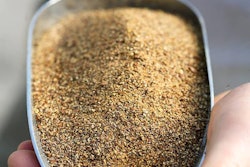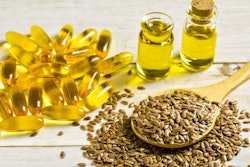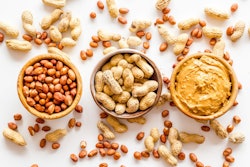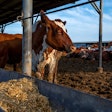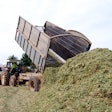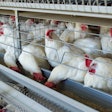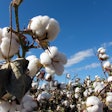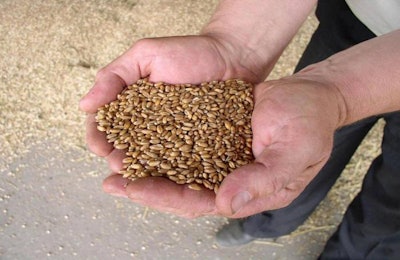
This expensive protein option is suitable to replace other, even more expensive protein sources.
Wheat gluten is a protein with quite interesting and unique properties. When mixed with water, it forms a highly elastic mass. This property makes the use of wheat gluten important in improving the strength of weak wheat flours (that is, because of its ability to force dough to rise). It also gives “chewiness” to plant-based meat and cheese alternatives, a function that is finding renewed interest in modern times. Finally, it is a very effective binder used particularly in certain aquafeed applications that require super hard pellets.
Wheat gluten is the water insoluble protein fraction extracted from wheat flour. The standard composition for wheat gluten (from the International Wheat Gluten Association) is more than 75% protein, with a maximum of 10% moisture, 2% ash, 2% fat, and less than 2% crude fiber. The two major proteins in wheat gluten are glutenin and gliadin. The former is soluble in alcohol, and the latter soluble in dilute acid or alkali. Thus, water applications of wheat gluten, as in liquid milk replacers, require a dispersing and even a stabilizing agent.
Wheat gluten protein is 7% to 15% of the total wheat kernel. Gluten protein surrounds the starch granules and is uniformly distributed, as a matrix, within the floury endosperm of the wheat kernel. To produce wheat gluten, water is mixed with wheat flour in equal proportions. More water is then added with additional mixing to form a curd-like substance. This substance is then passed over screens to free starch from gluten lumps and then starch is separated by centrifugation and dried. The gluten lumps are then spray-dried. Spray-drying is accomplished at temperatures exceeding 65 degrees Celsius. These high temperatures do not cause protein denaturation because proteins are not directly exposed to the heat source.
Applications for young animal feeds
Wheat gluten is deficient in lysine, threonine, methionine and tryptophan, when compared with other high-quality protein sources, as for example, casein. The latter is much more expensive than wheat gluten and for that reason it is usually substituted by wheat gluten in less expensive products. Deficiencies of these amino acids are easily covered in practice by adding conventional feed-grade amino acids or other refined protein sources.
Wheat gluten has been tested with success as an alternative to fish meal, but such usage depends on the highly variable price of fish meal. It is also a good partial replacement for animal plasma, at least as it regards its high glutamine content (20-30%) and overall highly digestible protein. Finally, wheat gluten can be used in broiler super prestarters to boost protein digestibility and mitigate the allergenic reactions of soybean meal. Finally, its main use is in calf milk replacers, again as a less expensive alternative to the major milk protein, casein.
Nevertheless, wheat gluten may also stimulate an allergic response similar to other plant proteins (e.g., soybean) when introduced at high levels into the very young animal’s diet. Indeed, increased antibody titers to wheat gluten in humans were reported decades ago, whereas, in calves, an intestinal allergic response to wheat gluten similar to that caused by soybean protein was reported even earlier. The wheat gluten intolerance in humans is quite a well-known reaction. In general, wheat gluten is too expensive to be used at high enough levels to cause significant allergenic reactions under commercial practical farming conditions.


